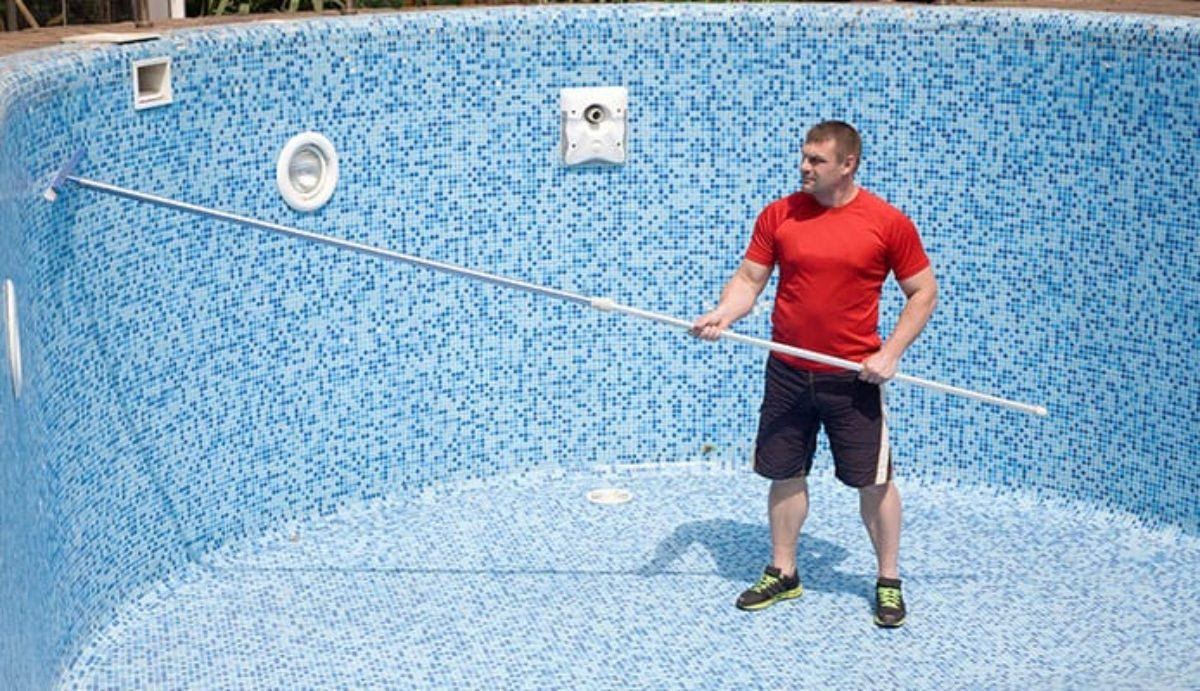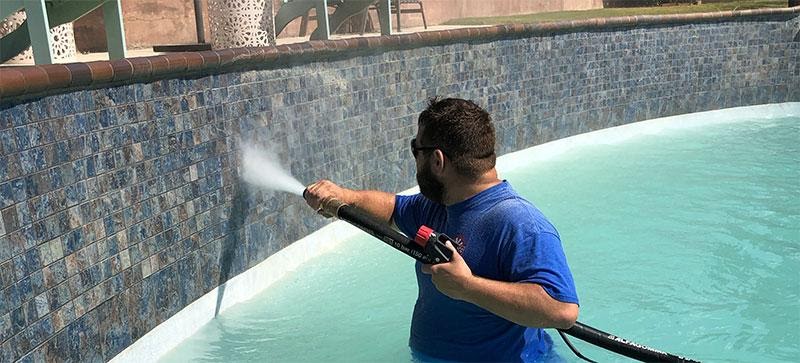No matter how beautiful a swimming pool is, it may not be that beautiful in a few years without a good maintenance culture. So, you should also factor in regular maintenance in your plan to have a sophisticated backyard pool.
Clearly, the removal of leaves, dirt, and debris from the water is sure. However, it takes a level of diligence to clean the very surface of the pool tiles. Or else, you may find some grime, stains, and debris residues on the surface of the pool tiles, particularly on the waterline or fill line.
The grime accumulates body oil, mineral deposits, and sunscreen from different substances that stick to the tiles. And if you notice hard water deposits in the form of these stains inside the pool, you should quickly respond with the correct methods.

While we have examined the general principles of cleaning the pool tiles within and around the pool, there is more. The thing left is to focus specifically on the waterline that could have gathered its own stains due to continuous use.
Moreover, as water evaporates from the pool’s surface, it leaves behind some amounts of mineral deposits. These residues cling to the walls or sides of the pool and appear as whitish or grayish scum, majorly from calcium.
How often should you clean your Tile waterline?
The easiest plan for waterline pool tile cleaning is when you find any discoloration. It could be weekly or monthly, depending on the frequency and level of use.
Meanwhile, some tiny amounts of this build-up that just starts to gather at the waterline are much easier to clean. Therefore, there is no reason to wait until the accumulation is heavy. In addition, ensure you do the cleaning from the beginning to the end of the line along the pool surface.
Items and Tools you need for Cleaning your Pool Waterline
- Pool vacuum
- Eye protection
- Rubber gloves
- Protective clothing
- Plastic bucket
- Skimmer net
- Stiff-bristled brush
- Soft-bristled brush
As for the materials you need to prepare a homemade cleaner, you need to provide the following;
- Commercial tile cleaner
- Distilled white vinegar
- Baking soda
- Dishwashing liquid
- Cleaning vinegar
- Melamine sponge
Instructions to the Cleaning Process
The following are stepwise instructions to follow in cleaning up your pool waterline. You can freely begin with the simplest of all the methods, which can also minimize the efforts of the other steps.
For example, take care of the grime on time without using more toxic chemicals or energy-consuming cleaning methods.
Remove Organic Matter
If you find any leaf, grass clippings, and other substances that litter the water surface or the surrounding. A simple way to deal with these items is to remove them from the water surface through a pool vacuum or a net skimmer.
In the case of a net skimmer, the pole connecting the net must be long enough to reach the entire pool surface. This method does not require a particular skill as such.
Lower the Waterline
The next step in achieving great effectiveness in cleaning the waterline is deliberately lowering the waterline from its usual position. In other words, instead of working on the pool deck while in the water, you can drop the line of the water to effectively clean the initial position. Click here to read about How To Create Artistic Display with Glass Pool Tiles in Your Luxury Swimming Pool.

You need a Scrub Brush
At this point, you need to bring out your scrub brush to do the actual work. However, you cannot use brushes with wire bristles for this purpose and let them work in circular motions. Continue to use this style until you cover the entire area and remove all the mineral deposits.
On the other hand, if you have glass tiles, you should use a brush with soft bristles instead of a hard brush. The reason is that a stiff brush may cause permanent scratches on the glass due to the scrubbing. Meanwhile, old brushes with softened bristles may also work for small areas.
Remove all dirt and grime
You can remove the accumulation by the time you have loosened all the mineral deposits on the pool tile. This accumulation may contain grime, body oil, and dust. At the same time, you can remove them through the scrubbing process of the area.
Your homemade prepared solutions kept in a plastic bucket can be very handy here to clean the tiles. And the way to make the solution is through any of the following recipes
- One part of a distilled white vinegar with one part of water
- Two parts of water plus one part of leaning vinegar
- Some of the dry baking soda with a few drops of water to make a paste
- One gallon of water to mix one-fourth cup of the dishwashing liquid
The method will involve dipping the scrub brush into the solution and scouring the pool tiles at the waterline. Alternatively, you can use the melanin sponge to remove any tough stain on the tiles caused by the waterline.
You can also splash some pool water or even freshwater on any area you just cleaned and repeat the scrubbing process. Furthermore, repeat the cleaning steps to cover the entire perimeter of the pool area.
As advice, you can use the cleaning solutions while wearing goggles or any other eye protection, although the solution is not toxic. Moreover, wearing this protection can also prevent any splatters in the eyes while mixing the solution or applying it.
Use a Pumice stone
If the homemade cleaning solution with the scrub brush cannot remove the mineral deposits on the waterline, there is another method. The alternative is to use the pumice stone to remove any other stain that may exist, especially those caused by deposits of calcium compounds.
These cleaning stones are available online or at any pool supply store for home improvement. This stone is retrieved from a ground volcanic rock. Moreover, the stone can break apart the deposits of calcium stains. Also, maintain the stone with a wet tile while using it to prevent scratching. And continue to work slowly with a light touch and scrub in circles along the waterline.

Conclusion
Finally, the following strategies are employable when cleaning the waterline on the pool tiles. When employing these stains, discover the best and safest ways to remove these stains. And when implementing the method, ensure you adhere to the precautions to prevent any damage.
